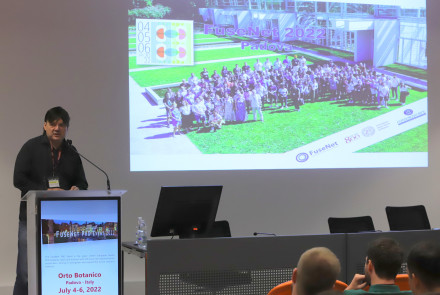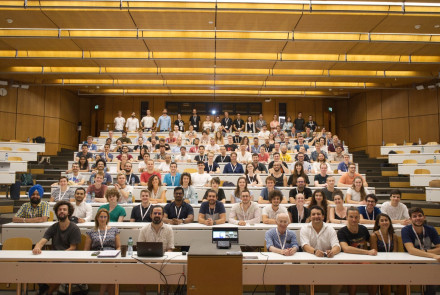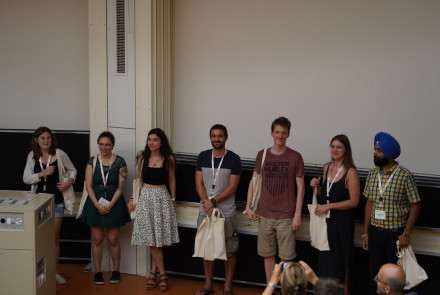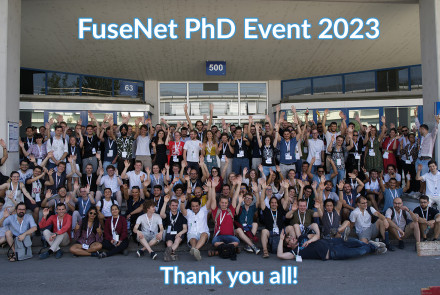The first plasma of Wendelstein 7-X is a fact!
A new twist to magnetically confined fusion
After more than 10 years of construction, the long-awaited first plasma of the Wendelstein 7-X reactor in Greifswald, Germany, is a fact!
At the Max-Planck Institute a large delegation of scientists and journalists witnessed the largest stellarator in the world come to life in an approximately 100 millisecond shot of 1.8 MW, with a plasma of around 1 million degrees. This might not sound very impressive in terms of fusion reactor output, but this first plasma was only the beginning and kept relatively low in power because the first wall is still uncooled and limiters instead of divertors are installed. Eventually, the stellarator should be able to produce a steady-state (for at least 30 minutes!) plasma of 10 MW in the second operation phase in 2018.
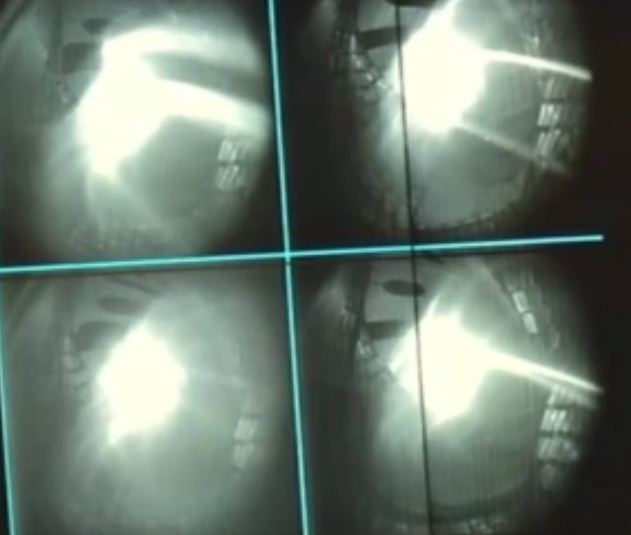
The first plasma of Wendelstein 7-X on December 10, 13:30 CET.
This first plasma was made with the noble gas Helium. On the IPP website, project Head Professor Thomas Klinger explains why: "In Helium the plasma state is easier to achieve. Moreover, we can use the Helium plasmas to clean the surface of the plasma vessel". At the end of January 2016 the actual object of investigation, a Hydrogen plasma, will be made.
Green light for Wendelstein 7-X
Over the past few months, scientists have been long awaiting the operation permission from the German nuclear authorities. The technical expert group (TÜV Rheinland) was appointed by the German authorities to report on the safety of Wendelstein 7-X and finally the green light for operation was given on December 9th, 2015. In the long waiting period until then, the scientists at W7-X commissioned the stellarator extensively to ensure everything worked perfectly today:
- In March 2015, the vacuum system was successfully tested and the magnets were cooled to to 4 K.
- In July 2015, the magnetic field and flux-surfaces were proven to be spot-on by an intriguing diagnostic, which created beautiful pictures in the process.
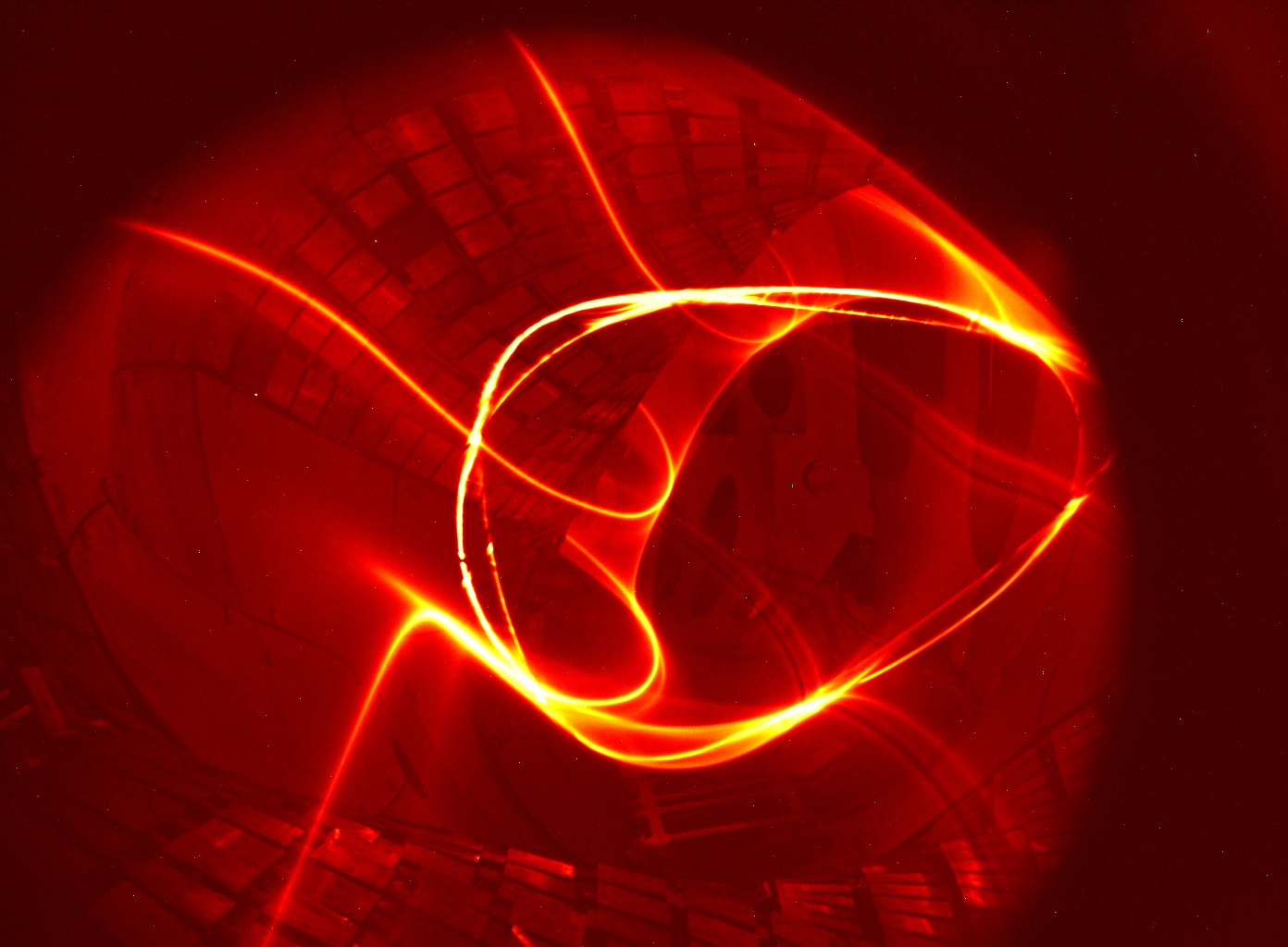
Spot-on flux surfaces at Wendelstein 7-X during tests in July 2015. Copyright: IPP.
Too complex to be real... or not?
The Wendelstein 7-X stellarator is a machine that looks too odd and complex to be real. Some news reports referred to it as a drawing from a science fiction comic book. But on the contrary, it might be one of the best bets we have to tame and confine fusion plasmas in an operating reactor. The optimal shape of this stellarator was computed mathematically such that when a particle travels on the outside of the center on one of the curved sections, it will move through the opposite side in the next curved section. In this way, the upward drift on one side is counteracted by the downward drift on the other.
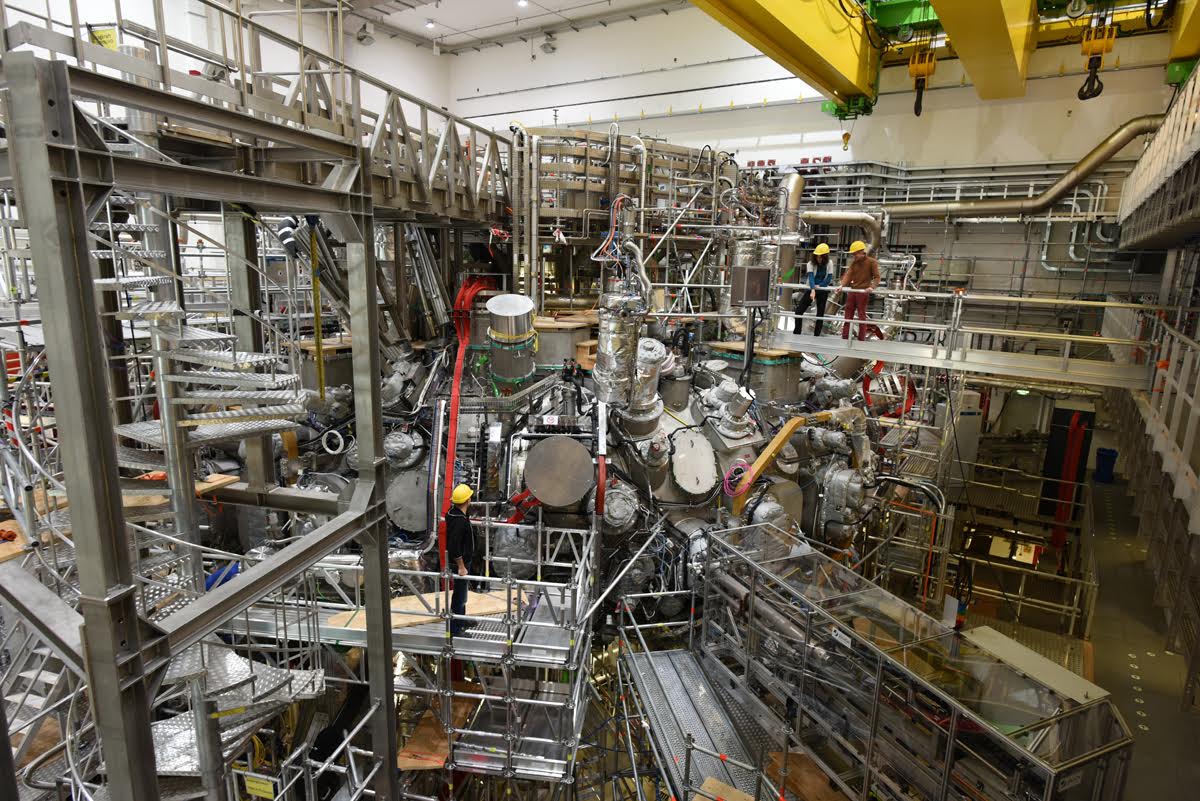
Wendelstein 7-X as it looks today. Copyright: IPP.
A configuration in line with theoretical optimizations
The advantage of this design is that it greatly reduces the particle drift, such that it is not necessary to run a large electric current through the plasma itself to produce powerful confining forces. In tokamaks, these currents are themselves a source of instability in the plasma. This seems a perfect solution in theory, but now that Wendelstein 7-X is started up, we will find out how well the odd shape of the stellarator will perform in reality and we will see if long confinement times are possible. Even when successful, the internal volume of Wendelstein 7-X is still more than a factor 2 away from a power-producing reactor, but it could provide an important guideline to the design of future DEMOnstration powerplants.
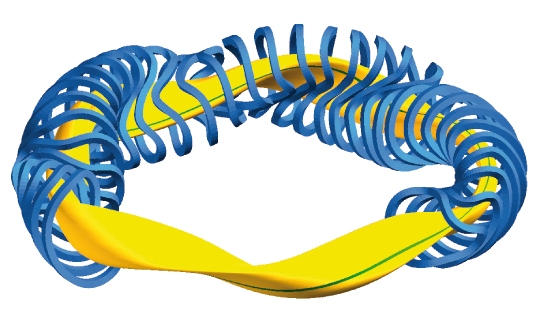
Schematic representation of the complex shape of the coils (blue) and plasma (yellow) of Wendelstein 7-X.
Compared to previously built stellarators, neoclassical confinement should be much better for Wendelstein 7-X. This means that the diffusion of ions will be kept low and constant within the whole machine. One of the goals of the first phase of operation that started today is therefore to verify that the confinement is as good as theoretical models predicted. Another goal is to develop a high-density scenario which should be used as a baseline for high-power steady-state operation in the second operation phase.
Building towards the future
After the current two month campaign, the stellarator will be stopped for another year to remove the graphite limiter tiles that are currently placed, and to replace them by 10 inertially cooled divertor units. This divertor will not be exposed to the continuous plasma but is used as a test. Its shape mimics the actively cooled heat flux (HHF) divertor which is the component that will allow the steady-state operation which is foreseen in the start of 2019. The complete HHF divertor will be assembled in the 70 weeks leading to this operation phase.

The Max-Planck Institute in Greifswald, home of the biggest stellarator in the world. Photo: Ivana Abramovic.
More on Wendelstein 7-X
- Website and latest news of IPP Institute
- 3D CAD model video with explanation about the construction of Wendelstein 7-X
- Video and timelampse of the construction process of Wendelstein 7-X
- Science Magazine article on Wendelstein 7-X
More coverage on first plasma of Wendelstein 7-X:


